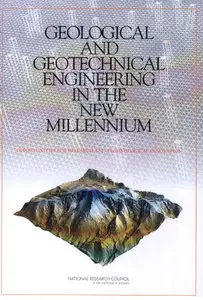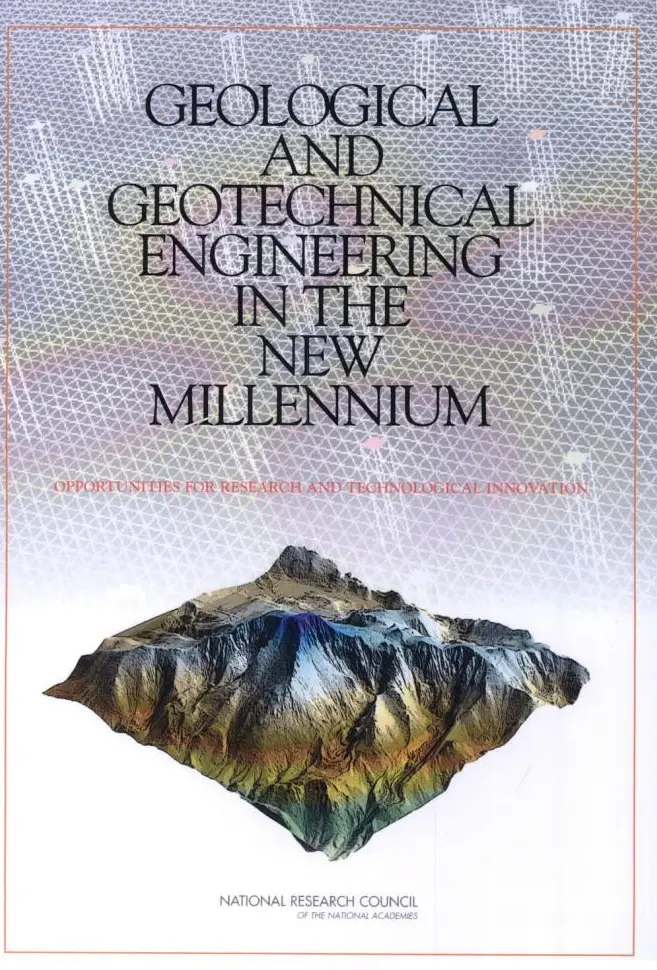Geological and Geotechnical Engineering in the New Millennium: Opportunities for Research and Technological Innovation
Committee on Geological and Geotechnical Engineering in the New Millennium; Committee on Geological and Geotechnical Engineering, National Research Council
NAS Press | 2006 | ISBN: 0309653312 0309100097 9780309100090 | 221 pages | PDF | 34 MB
Committee on Geological and Geotechnical Engineering in the New Millennium; Committee on Geological and Geotechnical Engineering, National Research Council
NAS Press | 2006 | ISBN: 0309653312 0309100097 9780309100090 | 221 pages | PDF | 34 MB
This report presents a vision for the future of geotechnology aimed at National Science Foundation (NSF) program managers, the geological and geotechnical engineering community as a whole, and other interested parties, including Congress, federal and state agencies, industry, academia, and other stakeholders in geoengineering research. Some of the ideas may be close to reality whereas others may turn out to be elusive, but they all present possibilities to strive for and potential goals for the future.
Geoengineers are poised to expand their roles and lead in finding solutions for modern Earth systems problems, such as global change, emissions-free energy supply, global water supply, and urban systems.
The field of geoengineering is at a crossroads where the path to high-tech solutions meets the path to expanding applications of geotechnology. In this report, the term “geoengineering” includes all types of engineering that deal with Earth materials, such as geotechnical engineering, geological engineering, hydrological engineering, and Earth-related parts of petroleum engineering and mining engineering. The rapid expansion of nanotechnology, biotechnology, and information technology begs the question of how these new approaches might come to play in developing better solutions for geotechnological problems.
Contents
SUMMARY
1 INTRODUCTION
1.1 Past, Present, and Future Scenarios
1.2 Research Issues for Geoengineering
1.3 Study and Report
2 UPDATING THE 1989 GEOTECHNOLOGY REPORT: WHERE DO WE STAND?
2.1 Waste Management
2.2 Infrastructure Development and Rehabilitation
2.3 Construction Efficiency and Innovation
2.4 National Security
2.5 Resource Discovery and Recovery
2.6 Mitigation of Natural Hazards
2.7 Frontier Exploration and Development
2.8 Remaining Knowledge Gaps
2.9 The Way Forward
3 MEETING THE CHALLENGES WITH NEW TECHNOLOGIES AND TOOLS
3.1 Biotechnologies
3.2 Nanotechnologies
3.3 Sensors and Sensing System Technologies
3.4 Geophysical Methods
3.5 Remote Sensing
3.6 Information Technologies and Cyberinfrastructure
3.7 The Potential of the New Technologies for Advancing Geoengineering
4 GEOENGINEERING FOR EARTH SYSTEMS AND SUSTAINABILITY
4.1 Sustainable Development
4.2 Earth Systems Engineering
4.3 Geoengineering for Earth Systems
4.4 Geoengineering for an Earth Systems Initiative
4.5 Summary
5 INSTITUTIONAL ISSUES FOR THE NEW AGENDA IN GEOENGINEERING
5.1 National Science Foundation Issues
5.2 Universities
5.3 Industry’s Role
5.4 Diversifying the Workforce
5.5 Institutional Issues for a New Agenda in Geoengineering
6 FINDINGS AND RECOMMENDATIONS
6.1 Knowledge Gaps and New Tools
6.2 Geoengineering for Earth Systems
6.3 Interdisciplinary Research and Education
6.4 Conclusion
REFERENCES
APPENDIXES
A Biographical Sketches of Committee Members and Staff
B Workshop Agenda and Participants
C Acronyms
with TOC BookMarkLinks



